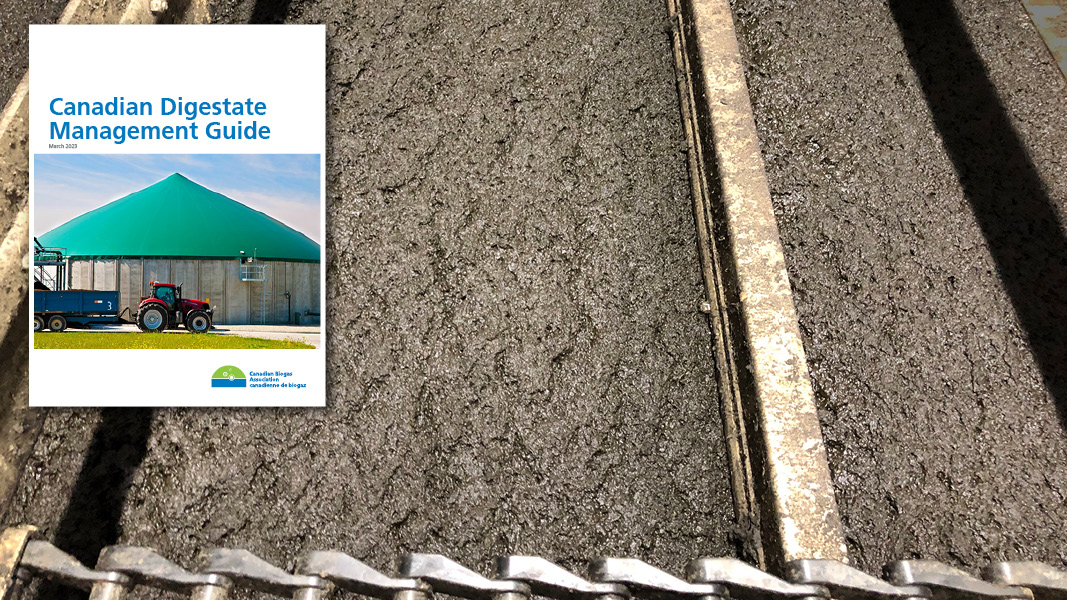Top: Background photo by Nora Goldstein
The Canadian Biogas Association (CBA) released the Canadian Digestate Management Guide in March 2023. CBA notes the Guide “summarizes best management practices appropriate in a Canadian context,” however the information is relevant to anaerobic digestion facilities located anywhere. Topics covered include how digestate is produced, key characteristics, best management practices, and nutrient stewardship principles. “This is the first version of the Guide and reflects gaps in the current knowledge base,” explains the introduction. “It is the expectation of the CBA that the Guide will be updated from time to time as new information becomes available.”
Digestate produced by industrial and agricultural biogas plants is covered in the Guide. In Canada, industrial biogas plants can secure registration and certification of the digestate as a fertilizer from the Canadian Food Inspection Agency. The requirements for registration are set out in the Canadian Fertilizers Act and Regulations. “In some jurisdictions, digestate for which fertilizer registration has been secured is deemed to be a product and can be sold and used similar to other commercially available fertilizer and soil amendment products,” states the Guide. “However, as a fertilizer, its use may be subject to nutrient management regulations. Industrial biogas plants may, depending on local market opportunities, subject digestate to further transformations to produce other products meeting specific quality requirements, such as through aerobic composting to produce compost products.”
For both industrial and agricultural biogas operations, the feedstocks being digested directly affect the characteristics of the digestate and its nutrient content. The impacts of these feedstock variations are highlighted in Table 3, “Nutrient Content of Some Biogas Plant Feedstocks,” and Table 4, “Organic Matter Content, Composition and Degradability of Some Biogas Plant Feedstocks.” The section on available organic matter in digestate discusses “effective organic carbon” (EOC) or “effective organic matter” (EOM), which measures “the proportion of applied organic carbon or organic matter respectively that remains in soil one year following application, [which] are considered useful indicators of the potential to create stable soil organic carbon,” explains the Guide. “EOC seems to be strongly associated with the proportion of organic carbon in suspended forms. For whole digestate products, EOC is estimated to range from approximately 50% to 70% of total organic carbon, slightly higher than undigested pig slurry, while the estimated EOM of solid digestate at approximately 70% to 75% is lower than that of compost at over 90%. Humification of organic material occurs during the composting process but is not thought to occur during anaerobic digestion.” Table 6 in the Guide compares EOM in manure, digestate and compost.
The Canadian Digestate Management Guide is available upon request from CBA.













